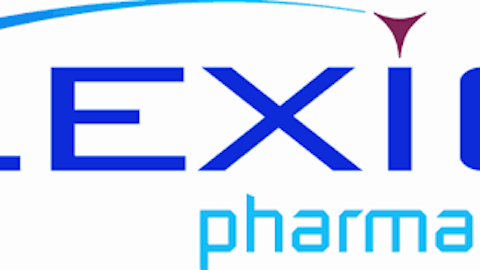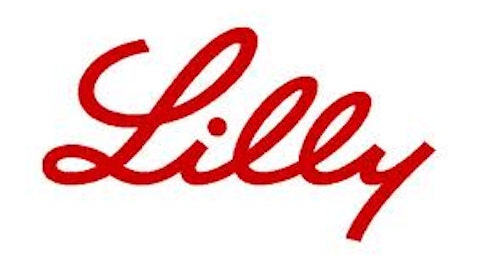Having heard about and invested enough in large-cap pharma, I believe it is time to consider funding smaller firms in the sector. Below you will find three interesting mid and small-cap pharmaceutical companies, Celgene Corporation (NASDAQ:CELG), Alexion Pharmaceuticals, Inc. (NASDAQ:ALXN) and Incyte Corporation (NASDAQ:INCY), with solid growth outlooks. Take a look at them, they might be worthy investments.
Celgene: A stock with promising future

Revlimid’s success is the source of Celgene Corporation (NASDAQ:CELG)’s, and the main factor that makes me, and other analysts, believe in the company’s future–although its potential product pipeline is also impressive. In 2012 Revlimid sales accounted for 68% of Celgene Corporation (NASDAQ:CELG)’s total revenue, reaching $3.8 billion. As the compound continues to retrieve compelling results in for both approved and potential indications, it is expected to generate over $6 billion by 2017.
The recent launch of the drug in Japan and current releases in Brazil and China should contribute significantly to future growth. The pending (but likely) approval of Revlimid in the E.U. provides even more development chances for the years to come.
In addition, the drug is expected to be approved for the treatment of lymphoma, mantle cell lymphoma and leukemia; NDA’s PDUFA date was fixed for June 2013. If successful, this could drive growth in Revlimid sales even further. Abraxane is also expecting FDA approval and has been recently granted a priority review that should be completed within six months, due to its the significant improvement it would provide for the treatment of advanced pancreatic cancer.
Pomalyst, another of the firm’s drugs, was also launched recently and, apart from its strong launch momentum, its sales should help drive growth in the years to come. Meanwhile, several new R&D collaborations and expansions of existing ones also comprise a promising investment for the long-term.
Moreover, the acquisitions of Pharmion and Abraxis have strengthened its already robust product portfolio by incorporating blood-related cancer and broader oncologic drugs.
In line with this encouraging outlook, guidance for 2013 looks good for investors: full year adjusted EPS is expected in the $5.50-$5.60 range, up 13% year over year. In addition, net product sales, projected at $6 billion for 2013, are expected to double their value by 2017. Even better is the forecast for earnings, predicted to reach $13.00 -$14.00 per share by the end of 2017.
Some analysts believe that if the company continues to exhibit such growth and profitability, it might quickly become a takeover target for larger pharmaceuticals, like Novartis or Roche, seeking to widen their oncology drugs portfolio.
Given its strong financials and its relatively cheap valuation, I would recommend buying this stock. Moreover, analyst consensus indicates a projected growth of 22.1% per year over the next five years (versus the 13.14% industry mean)
Alexion: An attractive option
Even before posting a solid fiscal first quarter wherein earnings climbed 78% year over year to $0.41 per share, and net product sales increased by 38% to $338.9 million, Alexion Pharmaceuticals, Inc. (NASDAQ:ALXN) was already an attractive investment option. However, these figures just complement a broader set of reasons to believe that this company will deliver even higher growth figures than Celgene, retrieving a 24.4% rate per year over the next five years (analyst consensus).
Despite trading at 68.5 times its earnings, it is still undervalued in relation to the industry. I’d recommend buying this stock for its compelling long-term outlook.
The real strength of this company relies on its only marketed drug, Soliris, a highly effective, specific and innovative composite that has become quite popular in the U.S. and E.U,. and for which patients are willing to pay a considerable price premium. Soliris is actually one of the priciest drugs in the world, costing roughly $410,000 per year per patient. This has provided Alexion Pharmaceuticals, Inc. (NASDAQ:ALXN) with good operating and net margins, of 36.7% and 23.7% respectively, versus the industry’s respective 25.9% and 13.75% averages.
Expansion of Soliris sales may come from various sources. In the first place, its label expansion from the Paroxysmal nocturnal hemoglobinuria (PNH) indication into the Atypical Hemolytic-uremic syndrome (aHUS) enhanced the drug´s sales in the U.S. without the need of significant workforce increases, and will most likely see similar results when launched in the E.U. before the end of 2013. Approval of this label is pending in Japan; if obtained, this market could drive growth even further. As stated by the company´s Executive VP David Hallal in last quarter’s earnings call, as the aHUS launch progresses, four drivers will contribute to long-term growth.
First, an increasing number of patients with PMA will be tested for aHUS. Second, a shorter turnaround time for a higher proportion of ADAMTS13 tests. Third, once diagnosed with aHUS, a higher proportion of patients will be rapidly started on Soliris treatment. And finally, over time, physicians will more fully appreciate the genetic and lifelong nature of aHUS.
Already marketed for PNH in 40 countries, Soliris’ expansion has not yet reached its limit. Plans include penetration in Latin America and Korea before the end of 2014. “Analysts project Soliris sales may increase to as much as $2.6 billion from $1.5 billion as its label expands and more countries approve reimbursement” (seekingalpha.com).
In addition, several other uses for the drug are being tested. It could be utilized to treat both rare and common conditions, from inflammation associated with chronic disorders like hematology, nephrology, transplant rejection, neurology, and ophthalmology; to acute humoral rejection, myasthenia gravis and STEC-HUS–marketing approval for this last condition will be pursued soon in the U.S. and E.U. As many of these disorders cannot be currently treated effectively by any drug, Solaris’ approval could considerably boost the firm’s market share and revenue.
Incyte Genomics: A small company with room to grow
Incyte Corporation (NASDAQ:INCY) is a company that doesn’t look very good on paper, but is actually a buy. It has been posting net losses for 10 years and, consequently, paying no dividends. However, earnings have been improving over the last year, reaching $0.14 per share in 2012’s Q4. Last quarter saw a $0.12 per share loss, which meant a 66% growth year over year on the back of a 96% increase in revenue to $71.007 million. This exponential growth in revenue was mainly driven by Jakafi product sales, which rose 150% to $48.3 million. In addition, a deal with Novartis provided royalties for this product for the first time, adding $5.9 million in profits. The company expects sales of Jakafi to reach $210 to $225 million by the end of fiscal 2013, almost double the $136 million achieved in 2012.
Although Jakafi is currently Incyte’s sole relevant product, it is also the only approved drug that can treat intermediate or high-risk myelofibrosis (MF), a rare bone marrow condition; as the population affected by this disease is not large, competition is unlikely to emerge soon. Furthermore, as, unlike similar drugs, Jakafi is self-administered, physicians feel more inclined to prescribing it. This is because it does not imply costs for them; the reimbursement process is faced directly by the patient.
Meanwhile, Incyte’s broad product pipeline looks quite promising. Not only is Jakafi being studied for further indications, including PV, refractory metastatic pancreatic cancer, ET, psoriasis, and lymphoma, but it is also studying another promising drug, Baricitinib, that could treat rheumatoid arthritis. If approved, Incyte’s sales potential could rocket.
Another encouraging sign can be found in the firm’s association with big-cap pharmaceuticals that can help market its product outside the U.S. The deal with Novartis, for example, does this in the E.U. and has already retrieved about $300 million in revenue to Incyte. The Eli Lilly agreement will do something similar for Baricitinib, although Lilly will receive worldwide rights to the drug. However, it has already resulted in approximately $200 million in revenues, mainly from milestone payments, which are expected to retrieve about another $600 million. In addition, royalty rates could reach the high twenties when the compound is approved. I’d say buy while it’s still small, because its growth potential is large (actually it’s expected to be 105.4% per year over the next five years).
Bottom line
Mid and low-cap companies offer very interesting investment opportunities for long-term shareholders, mainly because their products have not reached full market potential and its pipelines look quite promising. Above I have analyzed three options that, I believe, offer excellent investment prospects. Consider the opportunities and choose your favorite, and you will probably not be disappointed.
The article Is It Time To Invest In Mid & Small Cap Pharmaceuticals? originally appeared on Fool.com and is written by Victor Selva.
Victor is a member of The Motley Fool Blog Network — entries represent the personal opinion of the blogger and are not formally edited.
Copyright © 1995 – 2013 The Motley Fool, LLC. All rights reserved. The Motley Fool has a disclosure policy.



